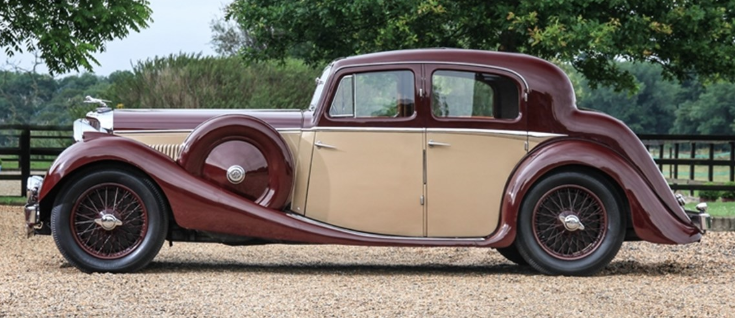From my perspective, one strong factor in Jeep's brand identity is its grille design that dates back to its World War 2 origins as a light military vehicle. Almost all Jeeps since then have featured variations on that design. This is akin to the famous long-lasting grille design themes of Rolls-Royce and Packard.
However, there was one exception to this strong Jeep theme. That was found on Jeep's Wagoneer station wagon line produced from 1963 into 1991. Early Wagoneers carried a stylized version of the traditional grille, but in 1970 that was abandoned for the rest of the model's production life. (The Wagoneer model is being revived as an SUV in the near future, and it is likely its grille will be traditional Jeep.)
Why was the grille theme changed? I suppose there might be an answer someplace on the Internet, and since this happened 50 years ago it's possible that some former American Motors employees are still around who can provide an explanation. For now, here is my conjecture: Marketers decided that Wagoneer station wagons were the firm's most civilized, non-offroad Jeep-like vehicles. Therefore, to distinguish them form "real" Jeeps, they needed a non-Jeep grille.
Unless noted, images below are either for-sale photos or photo supplied by factory publicists.
A 1944 Willys MB Jeep, Bonhams photo. The original stamped (simple and cheap to make) grille had nine vertical slots. Over the years, non-military Jeep grilles tended to have seven slots, a more manageable number for stylists to work with.
2019 Jeep Cherokee featuring the latest SUV version of the grille theme.
Wagoneer for 1963, its first model year. The grille retains vertical slots, but an even number of them in a V'd format. Nevertheless, this design proclaims the vehicle brand is Jeep.
Going into the late 1960s the grille shape changed from somewhat vertical to broadly horizontal. Now there were many vertical, Jeep-like slots.
As mentioned above, Jeep slots were abandoned in 1970. Here is a mid-1970s Wagoneer whose grille has an egg-crate pattern.
By the early 1980s, this was the Wagoneer grille. The egg-crate is gone, and now there are thin, horizontal bars -- almost the exact opposite of Jeep vertical slots.
A 1991 Wagoneer. Fewer horizontal bars, still no vertical slots. Thus ended the original Wagoneer line.
























































